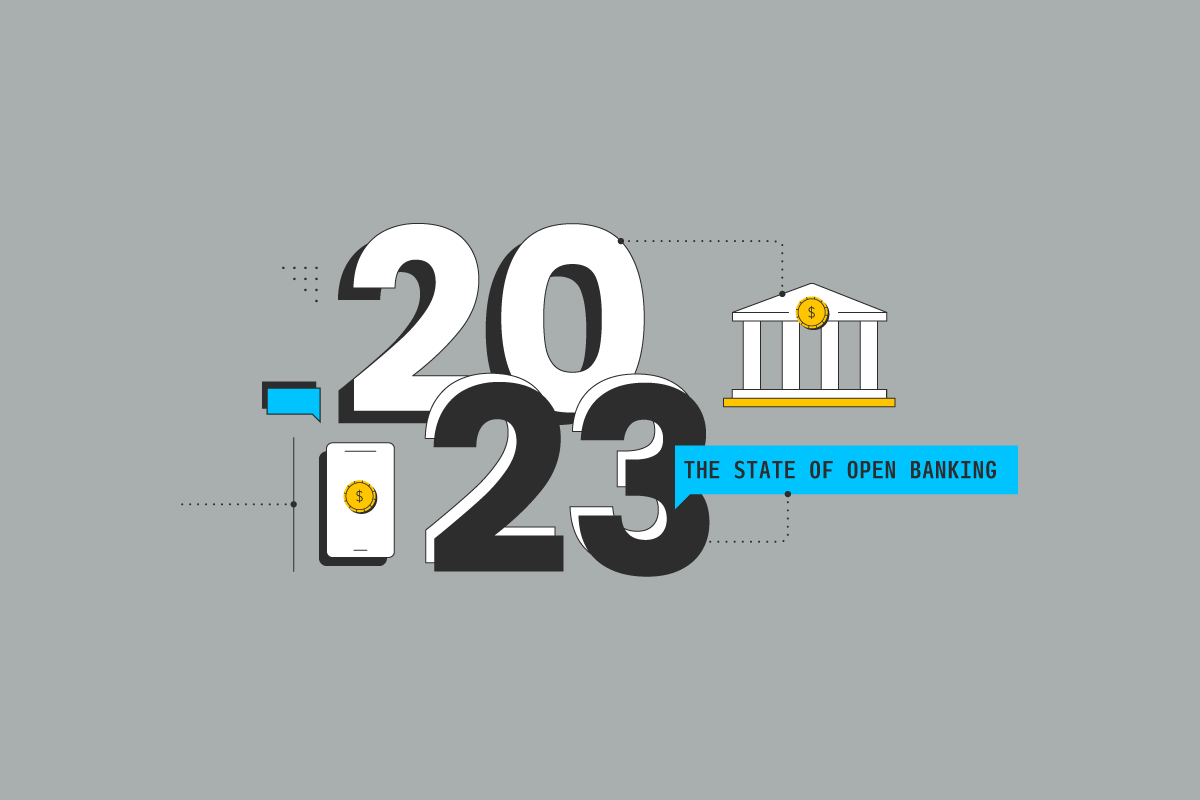Blog
Open banking in 2023: Progress around the world
May 4, 2023
Editorial Team

Open banking adoption, regulation, and innovation is moving at different speeds across the world. In some markets, it is edging towards inflection points of mass adoption, while in other markets, open banking innovation is just beginning. Nonetheless, there are clear tailwind for growth across the globe.
In this post we will take a brief look at how we got to where we are today, why payments is arguably the biggest and most imminent opportunity globally, and the state of some of the major markets.
How we got to where we are today
Today, open banking solutions and ecosystems are rolling out in most major markets, and these all fall into one of two broad categories: market-driven or regulatory-driven. Regulatory-driven markets are those in which regulators have identified a competition problem in the banking sector and they leverage regulation to open up the market. Regulatory-driven markets — chiefly the EU and UK — have been the earliest adopters and major drivers of open banking in recent years.
On the other hand, market-driven markets — such as the US — are relying on innovation from the private sector to kick-start open banking, although they may have some legislation in place to encourage it, without mandating full data sharing.
The big opportunity is in pay by bank
When the modern era of open banking was kick-started in 2018 with the Second Payments Services Directive (PSD2) in the EU, hopes were high that it would unleash a wave of new innovation around use cases based on account information, as well as cheaper, faster payments that would compete with cards.
Five years later, there has been a range of new digital banking and account information-based products and services launched across different markets, but adoption has been lower than many expected, arguably because traditional banks already offer “good enough” variations of those solutions, such as financial management tools. And some of these have already shut down as it has proven to be difficult to develop sustainable business models with this approach.
However, the case of open banking-powered payments, aka pay by bank, is different. Not only does pay by bank have clear, specific advantages over other payment methods, it is also showing sustained growth. And on top of that, most of this growth has come from single-instance payments, meaning that one of the most powerful use cases of pay by bank — recurring payments, has largely not yet been leveraged.
With this in mind, let’s take a look at the key markets and where they stand.
Pay by bank and open banking in the US
The US is the world’s second-biggest ecommerce market, and has the highest payment processing fees.
From a payments perspective, this means it is a market ripe for creative disruption — and pay by bank is a compelling low-cost alternative to card payments.
Yet there are a couple of unique aspects to the US market that mean progress has been slow so far. Federal and state regulations are inefficient, complex, and there is little appetite for leveraging regulation to open up the market — or even to force card networks to lower processing fees as is the case elsewhere. This means that so far, other markets with more proactive regulators have had a head start.
On the other hand, while it retains its market-driven approach, the US does have some nascent open banking-friendly regulations. The Biden Administration released an Executive Order in July 2021, requesting that the Consumer Financial Protection Bureau (CFPB) map out guidelines for consumers to transfer payments information. And the “CFPB Open Banking Rule” unveiled in October 2022, requires banking services to make financial data concerning a consumer available to that consumer.
Furthermore, a non profit organization — The Financial Data Exchange (FDX) — run by 200 financial industry members and stakeholders, including some of the largest banks, is on a mission to simplify and standardize financial data sharing in lieu of a regulatory framework. By October 2022, more than 42 million customer bank accounts were shared through FDX, up from 32 million earlier the same year.
But the real catalyst for pay by bank in the US will come from innovative startups — not regulation, nor incumbent players in the payment value chain, which benefit too much from the current outdated fee structures to want to lower prices with pay by bank. In spite of the lack of regulations that are mandating banks to open access to accounts, companies such as Link Money are already building pay by bank solutions that can reach the overwhelming majority of US checking accounts, something consumers are interested in, and drastically undercut card processing fees.
The upshot is that while the US is currently behind in terms of pay by bank adoption, the market is spring-loaded for innovation, and the stars are starting to align for potentially rapid adoption in coming years.
Open banking industry in the EU and UK
As mentioned above, the EU and UK ushered in the modern open banking era in 2018 with the Second Payments Services Directive (PSD2). The regulatory approach mandates that banks open up their data to third parties, accelerating the adoption and the growth of the ecosystem across the continent.
From a standing start, this approach has led to steady and consistent growth in open banking-powered payments. If we look at the UK as an example, the number of successful payment initiations made by open banking service providers using bank APIs (application programming interfaces) increased from under 1 million in November 2020 to 8.5 million in January 2023. You can see the trend in the chart below.

Furthermore, two new innovations have the potential to accelerate this trend in coming years — instant payments and Variable Recurring Payments (VRP).
Instant payments allow funds to be transferred in seconds but are not always available or cost-effective, especially cross-border. Late last year, the EU drafted a law to require banks across the union to offer and receive instant payment services for a fee equal to or lower than for traditional credit transfers. This will allow open banking providers to give merchants instant confirmation and verification that the transaction has been executed and settled, speeding up cash flow for merchants and paving the way to increase market share of open banking payments for ecommerce.
And in the UK, VRP is already mandated for moving funds between two accounts under the same name. However, this use case is only a hint of the potential. In the future, merchants will have the ability to automatically collect payments of different values from their customers, which will make it very interesting for utilities, variable loans, and other industries utilizing usage-based recurring payments. VRP will have the capacity to compete with major UK recurring and subscription payment methods, including direct debit and card-on-file. Once again, while this is not yet mandated, the future for VRP could usher in a new era of open banking payments as a go-to payment method for recurring purchases.
Open banking innovation in other key markets
Australia
An example of a regulatory-driven market, with regards to payments specifically, open banking is currently read access only, meaning customers cannot yet initiate payments. However, the Australian government has introduced a bill to include action initiation or "write access", which will enable payments use cases including initiating and automating payments, to insight-driven service provider switching, on the country’s New Payments Platform (NPP).
Brazil
Pix is an open banking-powered instant payment platform created and managed by the Central Bank of Brazil (BCB). Launched in 2020, it has exploded in popularity. By September 2022, USD $200 billion was being transacted on its rails monthly.
India
In India, the National Payments Corporation developed an instant real-time payment system, the open banking-powered Unified Payments Interface (UPI) digital payments network. As of October 2022, UPI was handling around 6.5 billion transactions per month.
Important to note: India and Brazil have seen blindingly fast adoption of their new payment platforms, but that has been a) a result of regulatory intervention of the sort that won’t happen in the US, and b) the technology solving a need that was unmet in these markets at the time. Furthermore, in both markets there are zero-fee caps on the new payment methods to encourage adoption, which combined with the need for a reliable digital payments system, has helped accelerate uptake. By contrast, in the US open banking is disrupting an existing system with a lot of stakeholders, which is a different challenge. Nonetheless, it does show what kinds of impact compelling alternative payment methods can have in different markets when the incentives are there.
The macroeconomic situation could provide a tailwind
In 2021, the total value of the open banking market was only $15 billion USD, but by 2024 it is predicted that the value will reach $64 billion.
Is there a chance that adoption of pay by bank could accelerate faster than projections? Currently some key macroeconomic themes around the world are the cost of living crisis and volatility, while some markets are still experiencing high levels of inflation.
In this kind of environment, pay by bank is actually very well positioned to thrive — due to exceptionally high fees particularly in the US — because the cheaper payments processing means merchants, and ultimately consumers, benefit from lower costs. And this is even before getting into advantages including improved customer experience and checkout conversion. To find out more about how your business can offer innovative open banking products, get in touch.